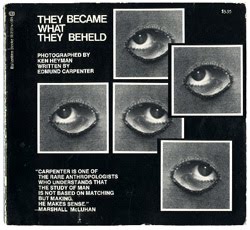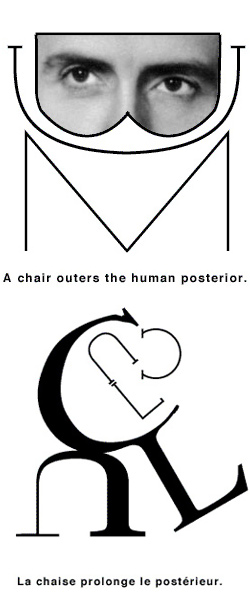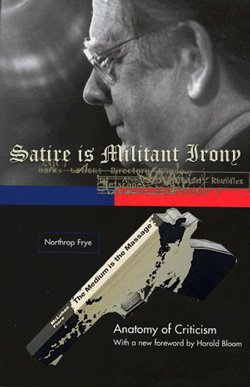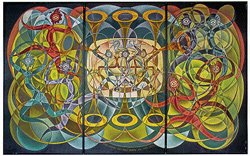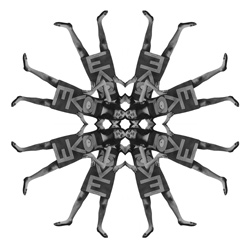
Marshall McLuhan made two decisions in 1937: one was the spiritual strategy of becoming a Roman Catholic, and the other was the secular strategy, after intensive study at Cambridge, of translating James Joyce's Work-in-Progress (later given the title of Finnegans Wake in 1939) into an aesthetic anti-environment useful for countering and probing the cultural assumptions of a practicing Catholic. For the next twenty years he refined his understanding of, first, the Thomist concept of analogical proportionality as the expression of the tactile interval, and second, its usefulness in perceiving the cultural effects of the new electric technologies, through an ongoing dialogue, analysis, and sensory meditation on the nature of metaphor and consciousness (including extrasensory perception) as an artifact. Since McLuhan defined "metaphor"(1) as the act of looking at one situation through another, each situation constitutive of figure-ground interplay (a concept borrowed from Gestalt psychology), then a metaphor was an instance of mixed media, or two figure-grounds. And so was consciousness - because of its essential subjective experience as doubleness, which is doubled again as the objective effect of its autonomous interplay with other consciousnesses. Metaphor, for McLuhan, was hylomorphic...
from : McLuhan and Holeopathic Quadrophrenia: The Mouse-That-Roared Syndrome
http://fivebodied.com/project/content/view/30/98/
=====


Subsequently, with a view to “inventing himself properly,” both as a
“serious artist” and as a Christian, McLuhan appears to have taken up
Lewis’s aesthetic, becoming a “duet in everything”:
"Vortex No. One—Art Vortex—Be Thyself"
You must talk with two tongues, if you do not wish to
cause confusion.
You must also learn, like a Circassian horseman, to change
tongues in mid-career without falling to Earth.
You must give the impression of two persuaders, standing
each on a different hip—left hip, right hip—with four eyes
vacillating concentrically at different angles upon the object
chosen for subjugation.
There is nothing so impressive as the number TWO.
You must be a duet in everything.
For, the Individual, the single object, and the isolated, is,
you will admit, an absurdity.
Why try and give the impression of a consistent and
indivisible personality?
You can establish yourself either as a Machine of two
similar fraternal surfaces overlapping.
Or, more sentimentally, you may postulate the relation of
object and its shadow for your two selves.
There is Yourself: and there is the Exterior World, that fat
mass you browse on.
You knead it into an amorphous imitation of yourself
inside yourself.
Sometimes you speak through its huskier mouth,
sometimes through yours.
Do not confuse yourself with it, or weaken the esoteric lines
of fine original being.
Do not marry it, either, to a maiden.
Any machine then you like: but become mechanical by
fundamental dual repetition.
For the sake of your good looks you must become a
machine.
Hurry up and get into this harmonious and sane
duality…
It appears that in approaching both matters simultaneously McLuhan
concluded that the “serious artist” and “Christian” were required of their
role, time, and age to occupy positions that were analogous — Neither
“serious artist” nor Christian had any place as a member of society or its
counter-culture, yet both were required to interface with the world if
not be at the very centre of their network and milieu. In brief, it appears
that McLuhan saw that the artists drive to exile or alienation while also
having commerce with the herd, so as to enact some form of marriage
between two psychic states of total immersion (Dionysian revelry?) and
dispassionate survey (Apollonian concern with structure?), was
comparable to the traditional Christian paradox and “inescapable
modality” of secular life...
The difficulty was, and this is the crux of the matter, McLuhan came to see
that under electric conditions all former artistic strategies and the
traditional Christian modality of being in the world became problematic:
Some feel that Christianity's existence must always stand in the
tension between being in the world and standing outside it.
Kierkegaard was keenly aware of this, as were St. Paul and, later,
Martin Luther. But the tension between inner and outer is a
merely visual guideline, and in the age of the X-ray inner and outer
are simultaneous events.
In view of his survey, it appears that McLuhan took from Baudelaire his
commitment to exploration and contemplation, from Lewis the charge
that reworking the vision of Dante would have to be done as the enemy,
and from all the artists after Austen a commitment to detachment, not
merely a tactic, but a way of life and “survival strategy”:
The need to retain an attitude of complete clinical detachment is
necessary for survival in this kind of work …. The road to
understanding media effects begins with arrogant superiority. If
one lacked this sense of superiority—this detachment—it would
be quite impossible to write about them. It would be like an
octopus attacking the great pyramids.
A.C. - THE NEW AMERICAN VORTEX













![et cetera : LOVE [1977]](https://blogger.googleusercontent.com/img/b/R29vZ2xl/AVvXsEgQ8s7vwLQuzHDNgqlfBacxRkEbOErToak9kmgFl0VmyIYEqS9qIzNIVcXKpzTncPhqo3TSgOyztAguIW6OlXw65aFHmpx6cRzmvCUQQMTwUGUOd0iE0GbJakEc3g3kBAJrvlZP4z3eesg/s1600/etc1977.jpg)









![MAC LUHAN [sic] : LOST IN TRANSLATION](https://blogger.googleusercontent.com/img/b/R29vZ2xl/AVvXsEg92tMqBMDA917NDivsS2ZwIirx9KTf24tOCgFFnK65p7Hw5dvqEh1e2aefCynj2UW8u-k8zwBXbjgypsCXUcv-5G7ZCsyDB13giHEjmhVISAeW-oI_JV6ePOXW_XBDPwy2nREAoqRU7Z8/s1600/MAC.jpg)






















![Les Yeux De Nadja [unpublished]](https://blogger.googleusercontent.com/img/b/R29vZ2xl/AVvXsEgrXohpIuxxYyjKoqBSQf3TpYGjnttZnjRFvmMdshadfnVKi7PMAjIqEuqYctZFXOFH2n-oH75oJx-YkaON7xvaZgVdvaK0zfSOurEmCKqmWF6qXh2F3VbqyixfGhvY4qH6LENMTs1wCIw/s1600/2xsurreal.jpg)
















![PIED PIPERS [MARSH] ALL](https://blogger.googleusercontent.com/img/b/R29vZ2xl/AVvXsEhqvGIGG9lWZYhFZRVc_V8EJG2apQBsys4kNQOQsA0EV6H6Tg-SMN0sX15NXy_GzsF3xAUdcb2QlfvJk-RU-Rha-3Eu5Mnglkf5KLe6pccVqAP4VR_Gi4fGQ716QSmDe3Zna5Uwct5d2sw/s1600/piedPiperMarshALL270.png)



























































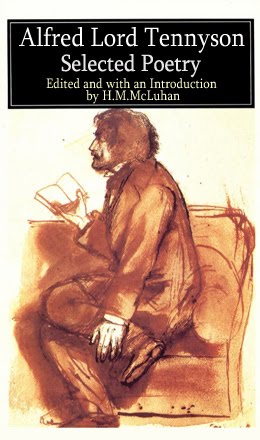






![PICNIC IN SPACE : The Great Minds of Our Time Film Series [1973]](https://blogger.googleusercontent.com/img/b/R29vZ2xl/AVvXsEjyov75DRIUBWcYLkzPYmupFy8CQ9dQ4Q798zDIN6jPNsSdBB_WuOcvPl4WjMAz10csG071oCO3BCUtIcKyHoIkCN0lCy0OxGCV_HrLXrGNKRpUiKMrqzkJh4LSc7jT_KrrqmClapSlVa8/s1600-r/PicnicInSpace.jpg)


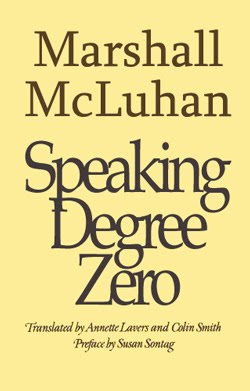

























![more Hidden ground [re:Bride] : the "flippancy" of tone seemed just "right"](https://blogger.googleusercontent.com/img/b/R29vZ2xl/AVvXsEg-hQyF9KGGhKYc73nUGmV1bStJ4fTJVh0-TL1ZtikLZEv5ppjhB3DOhFcVuzGq-kByrwtTAWgCcE173pA3UTIPe7h6xJjsPt7lRvNym007ZsdXenMDLNimKcwtaTOqkGleoxmXOeCKtxXL/s1600-r/LEAVISLEWIS.png)
















![BABA WAWA [TODAY SHOW, Toronto City Hall 1970]](https://blogger.googleusercontent.com/img/b/R29vZ2xl/AVvXsEjTZAIFkA07K36WGk951vmZnLPU99fOdNzlvVhyphenhyphenhKZEKu2n2AW5EA1CDZGaTk0aYRXUv7IOXG39igaikoE6SWm8j7QIG96wYRE54oBXwvlaNCJzp15vdkrcqR97IMMny-8sHjM-VDotTOaY/s1600-r/babaWawa.jpg)

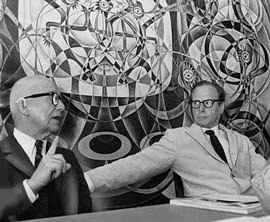

![enter the dragon : "typhon in america" [unpublished]](https://blogger.googleusercontent.com/img/b/R29vZ2xl/AVvXsEjdCnZdJ6JbaLc6hyUmUJo5UJ0m8WZSj_afYU9oRlHKIUgAIfcy2EPHNAptSRYEAmpOf0Xaa0B8iMgOTF302lY0Xmbyne0hvrdRyNo-t0Q-PPdzqX39uI3T5x5FppRPaQf9sSaXytrOpWVN/s1600-r/TIA.jpg)




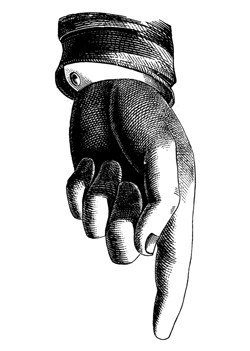






















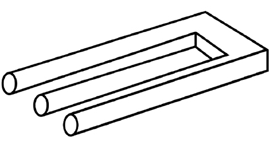









![Take Today [1972] : "the consumer becomes a producer..."](https://blogger.googleusercontent.com/img/b/R29vZ2xl/AVvXsEhA53bdVdTaXdQo1fDmrsI8oiAwF-3jampcanOq8uk3QMh8_ImkNsTiKd4-RnZY8Vbwqh1fymJiyCl1CSLcSonXHQM6XbnJYQi_Vu89gbAV4jVq73EtlbM3w6CthyphenhyphenV_pHEjE6eu_VhC489u/s1600-r/PROSUMER.jpg)
























































































![" Outtragedy of poetscalds!, Acomedy of letters " [ FW 425.24]](https://blogger.googleusercontent.com/img/b/R29vZ2xl/AVvXsEhJMrJLN3oPUb25A2tjQtWZcZxA4wZB0IOvaIAvxosAUqlFc258HHvzvlnHHvKhKq7hG3epo76izY2Bu0HC3Cy-8S46Rf0Wni3L8j8jEfpT7sXK3UFlXBMtN2v2JdrmdxvWk8VWKjkhN4-9/s1600-r/preplexLP.png)











![mars[HAL]9000 : " Tomorrow is our permanent address."](https://blogger.googleusercontent.com/img/b/R29vZ2xl/AVvXsEhmblupqmUiuV3GbyayJiDRGEO63TEgwjHi-i8b0kVYDvXrKFWTCyl-e21la4QJXC4nDFDzx51Omi6fYPLJcqRHFoP6zSsL0CVZF98eMf6mxCE2WDfvMmT4q9G3X45-P0IYGDmliE0fCR3C/s1600-r/marsHAL9000_250.jpg)




























































































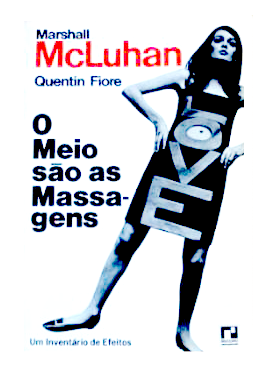





































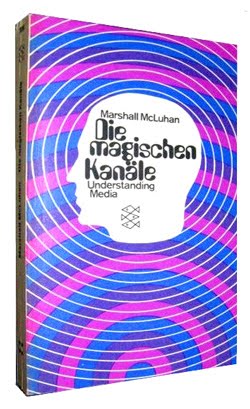







































































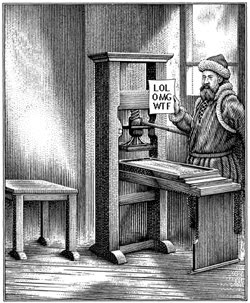








![Lucifer [from Latin] <br>meaning "light-bearer"](https://blogger.googleusercontent.com/img/b/R29vZ2xl/AVvXsEhq-2kZZOfh-Syv1Ewa0Ns2O6ZeP59pcsJp9ihhKcXCaovYZO_cKxffC5iSKOXFHr6E1jiHc6zedt1U6I95831RgpVdm3qk8-9C3y1yPyrCiQe4jgx-DsbeHnjKnw9t6Qx3ZM5TSYxiPj5H/s1600-r/lucifer.png)













